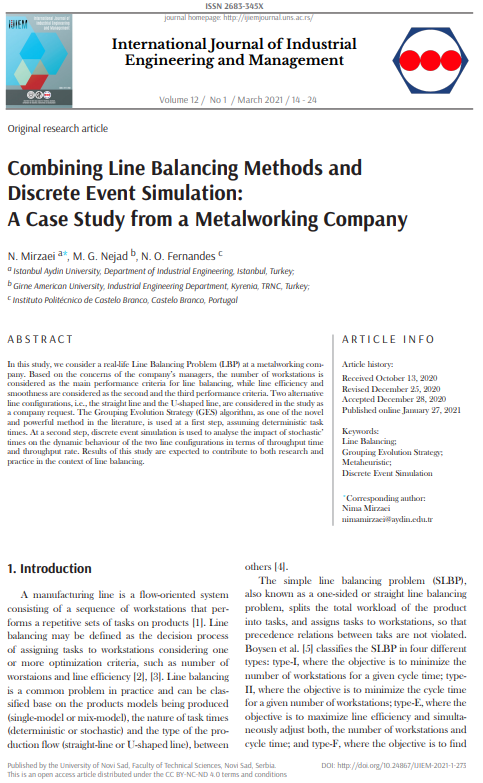Combining Line Balancing Methods and Discrete Event Simulation: A Case Study from a Metalworking Company

Published 2021-03-30
abstract views: 492 // FULL TEXT ARTICLE (PDF): 0
Keywords
- Line Balancing,
- Grouping Evolution Strategy,
- Metaheuristic,
- Discrete Event Simulation
How to Cite
Copyright (c) 2023 International Journal of Industrial Engineering and Management

This work is licensed under a Creative Commons Attribution 4.0 International License.
Abstract
In this study, we consider a real-life Line Balancing Problem (LBP) at a metalworking company. Based on the concerns of the company’s managers, the number of workstations is considered as the main performance criteria for line balancing, while line efficiency and smoothness are considered as the second and the third performance criteria. Two alternative line configurations, i.e., the straight line and the U-shaped line, are considered in the study as a company request. The Grouping Evolution Strategy (GES) algorithm, as one of the novel and powerful method in the literature, is used at a first step, assuming deterministic task times. At a second step, discrete event simulation is used to analyse the impact of stochastic’ times on the dynamic behaviour of the two line configurations in terms of throughput time and throughput rate. Results of this study are expected to contribute to both research and practice in the context of line balancing.
Article history: Received (October 13, 2020); Revised (December 25, 2020); Accepted (December 28, 2020); Published online (January 27, 2021)

